The Magic of Patola Silks & Fabrics
Introduction
Patola sarees are universally known as some of the most beautiful silk sarees that come from the state of Gujarat. These sarees have a long and rich history that has culminated in using the most complex and intricate weaving techniques to produce them. The exquisite patterns, vibrant colours, and wonderful material are just some of the reasons behind the popularity of Patola sarees. Come with us as we explore the various facets of the Patola saree.
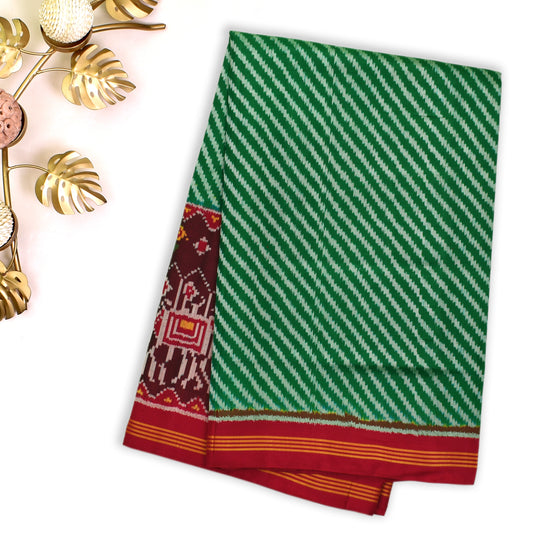
History
As previously mentioned, the history of the Patola saree is rich and complex.
The name itself has its origins in the Sanskrit word “pattakulla” which is the plural form of the word patolu. Clearly, this saree has existed for a very long time. In fact, its first appearance comes in the South Indian religious text of Narasimha Purana. The text talks about the saree being worn by women during important holy ceremonies which shows us that this saree has been considered to be a sign of wealth for a very long time.

There are many origin stories for the patola fabric, each having its own way of explaining how the fabric came into being. The most popular one claims that patola as a fabric originated around 900 years ago. It starts with a king called Kumarpala who was extremely fond of Patola. He was introduced to the fabric through the King of Jalna in Maharashtra. However, the King of Jalna would only give the fabric out to other aristocrats after he used them as bedsheets. So, Karmapala brought 700 Patola craftsmen and their families to Patan in Gujarat. Through this, the king was able to procure a steady supply of Patola garments.
This story was told to show that for the longest time, Patola has been considered an extremely luxurious fabric and was worn by royalty as a symbol of their wealth.

Characteristics of Patola Silk
All silk sarees are extremely beautiful but each type of silk saree has its own unique characteristics. Let’s take a look at what makes Patola silk so unique:
- Design and Pattern
One of the easiest ways to identify a Patola saree is by the design on it. These sarees are known for their abstract designs and geometric patterns. You will often find the figures of elephants, humans, Kalash, paan, and even parrots to be woven on the fabric. These designs are not limited to living beings as there are also designs that are based on the beautiful architecture of Gujarat.
In fact, some of these designs are so identifiable that they have been given their own names. For example, nari kunjar bhat (women and elephant patterns), paan bhat (peepul leaf motif), navratna bhat (square-shaped pattern) and fulvalli bhat (Flower pattern).

- Natural Dyes
Patola sarees are extremely vibrant due to the use of natural dyes in the making of the fabric. These dyes include indigo, turmeric, natural lakh, Katha, madder roots, cochineal, pomegranate skin, henna, and marigold.
- Reversible Design
Another unique aspect of this saree is that the design on it is reversible. No matter which side of the saree you are looking at, you will still be able to see a gorgeous pattern. This allows it to be worn in numerous ways and in multiple fashions.
All these characteristics put together allow Patola sarees to be immediately identifiable without losing out on their beauty.
Types of Patolas
Patola sarees come in a variety of designs and fabrics. Let us take a look at some of the more popular types:
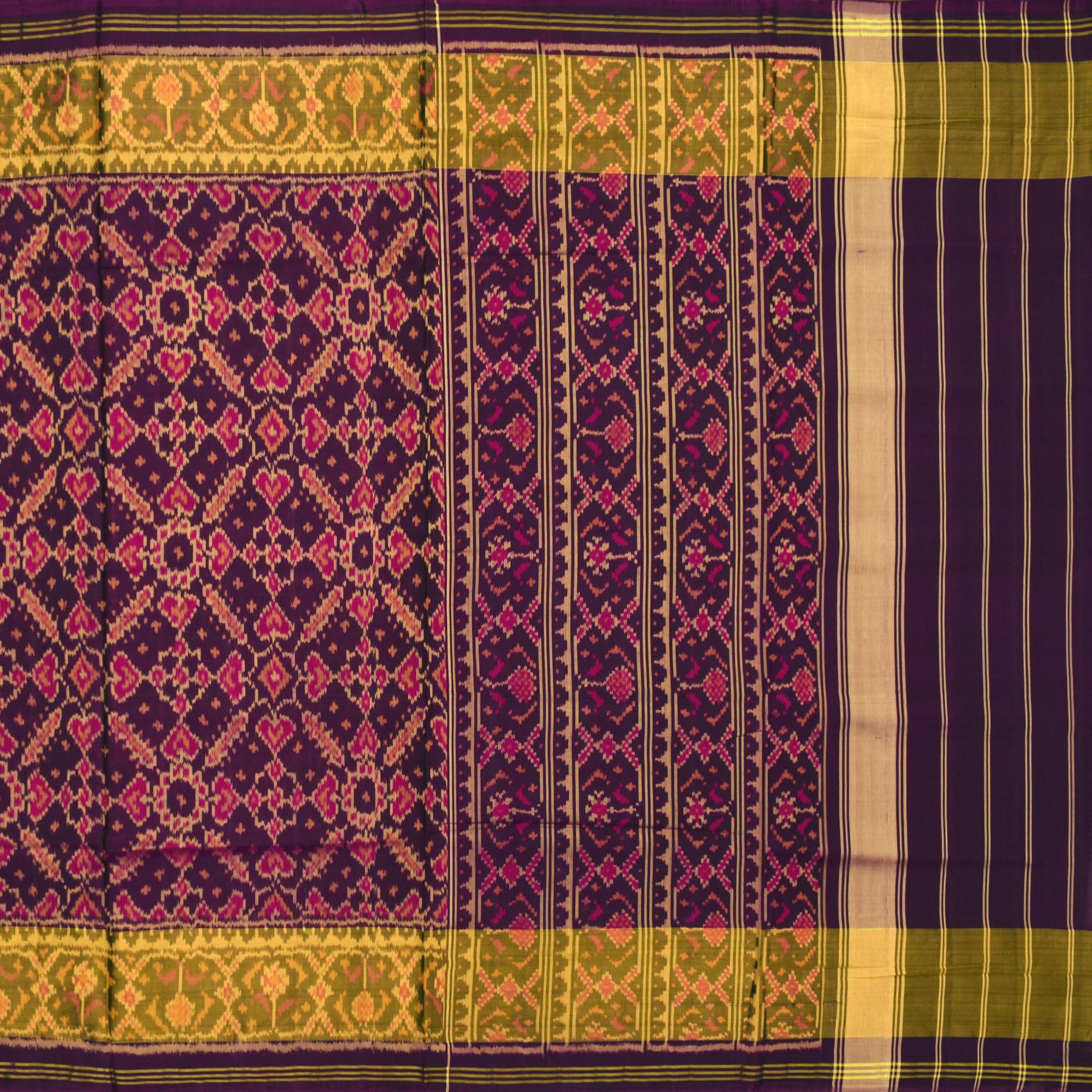
- Patan Patola
These types of Patola sarees are known for their complex making as the saree is dying in a horizontal manner. This means that it involves double ikat weaving. Simply put, the artisans will have to dye the wrap on both sides of the saree at the same time. This makes it uniquely difficult to make and is a labour-intensive task.
- Rajkot Patola
While these sarees are also quite hard to make, they are not as hard as the former type. This is because the saree is dyed in a vertical fashion. For this type of dying, the artisans can use the single ikat method which is less complicated.
- Banarasi Patola
This saree type is different from the previous two in that it is made with a special type of fabric. It is made with a wonderful blend of Banarasi fabric which allows its beauty to be elevated even more than if it was made with a more common fabric.
Of course, there are many more types of Patola sarees but these are the most popular types and are the most unique when it comes to design and fabric.
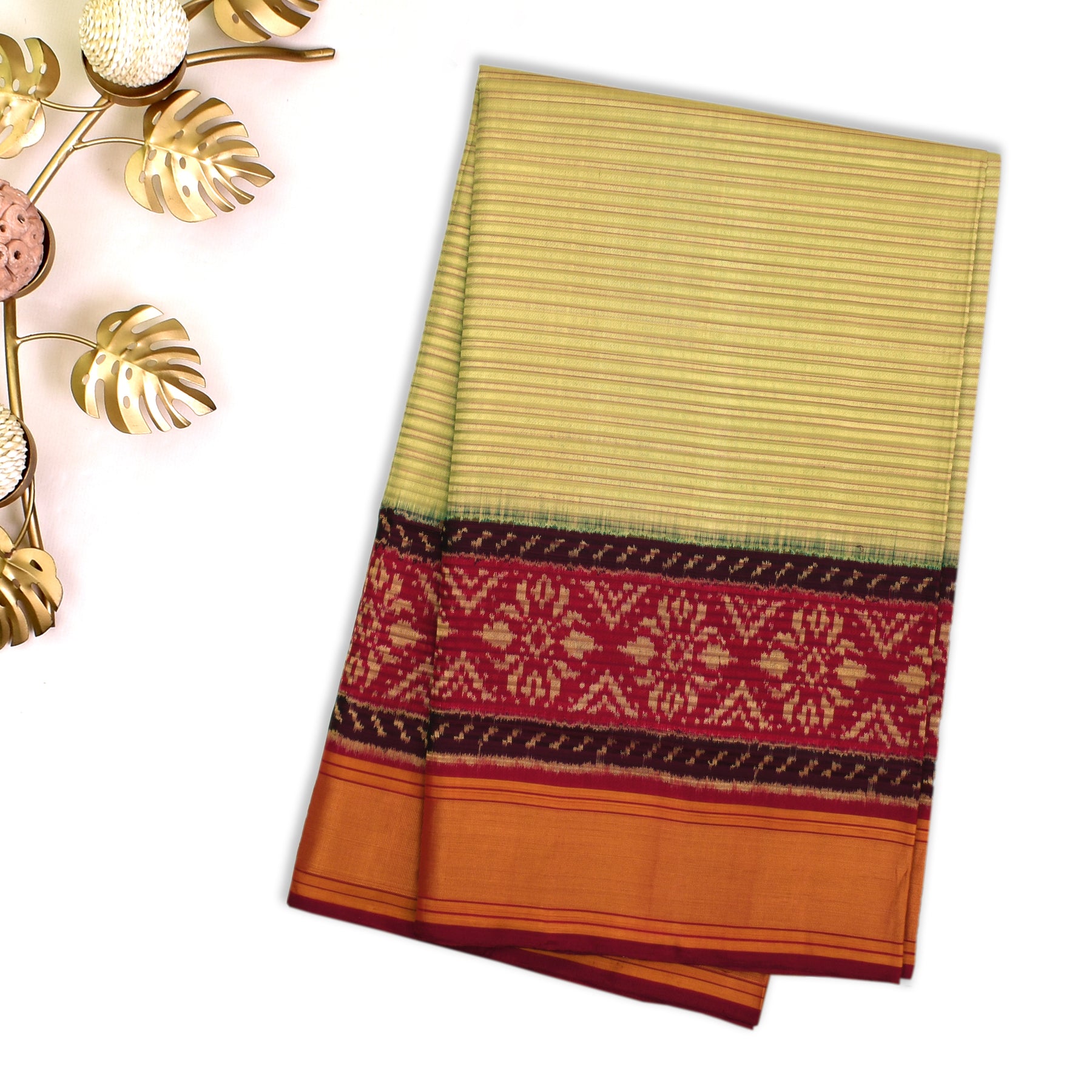
How Patola Silks Are Made
Now that we have gone through the types of Patola sarees, you might be wondering if they each have their own way of being made. While there may be differences in the type of material used, the actual weaving of the saree remains largely the same. Why don’t we take a closer look at it?
Patolas are made using the resist-dyeing process that is made with the warp and weft technique. This process can be quite difficult. To paint a realistic picture of how complex it can be, it would take three people between four to seven months to fully weave a patola saree. So, it is an expensive and time-consuming process.
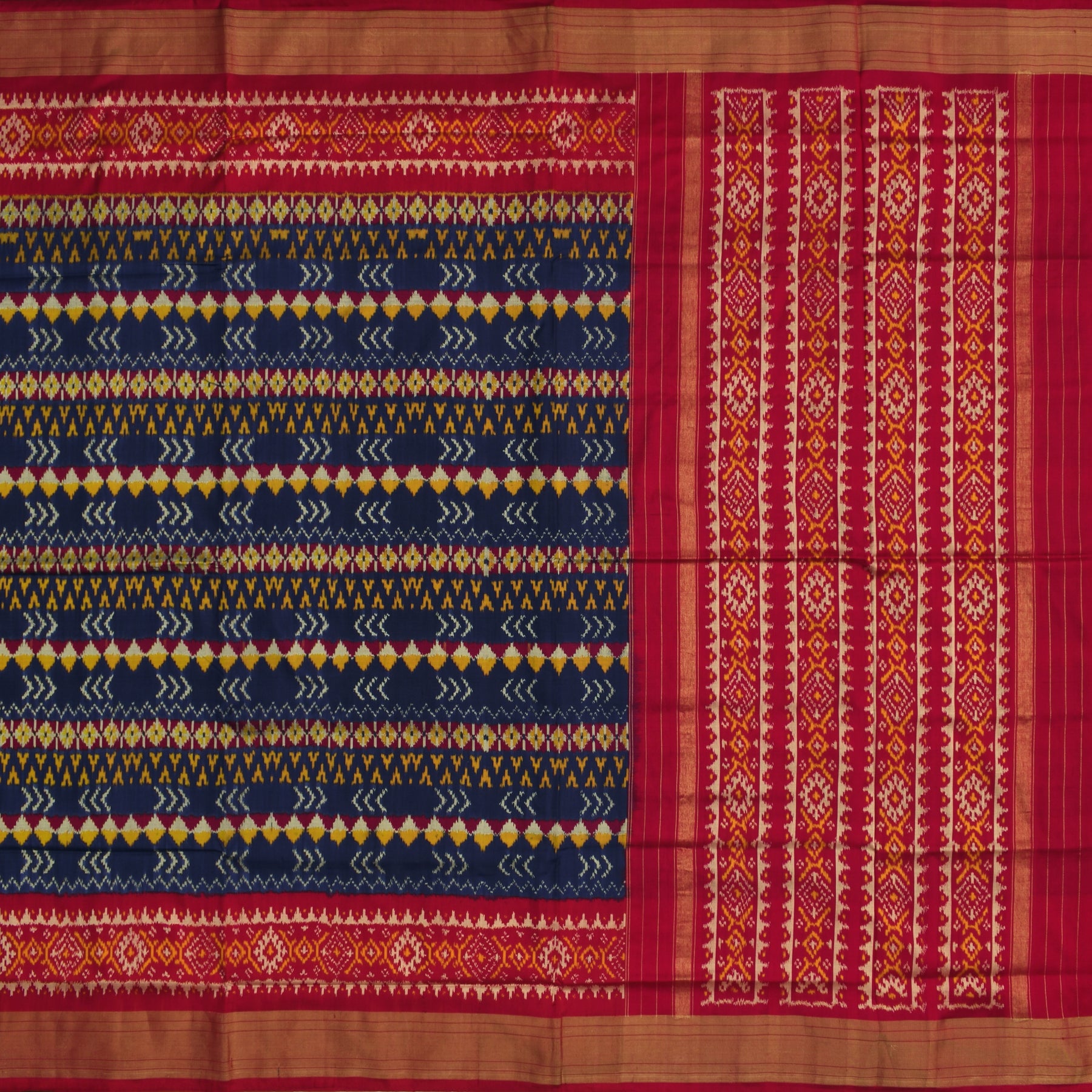
A vi, which is a sword-shaped stick made out of rosewood, is used for adjusting the yarns. The first step in weaving the saree involved tying the yarn with cotton threads. This is done according to the pattern used for the saree. The measurements used in this process can be as small as 1/100th of an inch.
The yarn undergoes multiple cycles of tying and dyeing, according to a specific order of colours. If there is even the slightest bit of displacement in the yarn, it will disturb the whole arrangement and it will need to be redone. Every colour has a place and alignment which needs to be carefully followed.
This should show just how much detail, effort, and time goes into the making of these sarees. In fact, the Patola loom has a unique feature in that it is tilted to one side. This makes it so that two people are needed for it to be used. Depending on the length and intricacy of the pattern, it can even take up to a year to make these sarees!
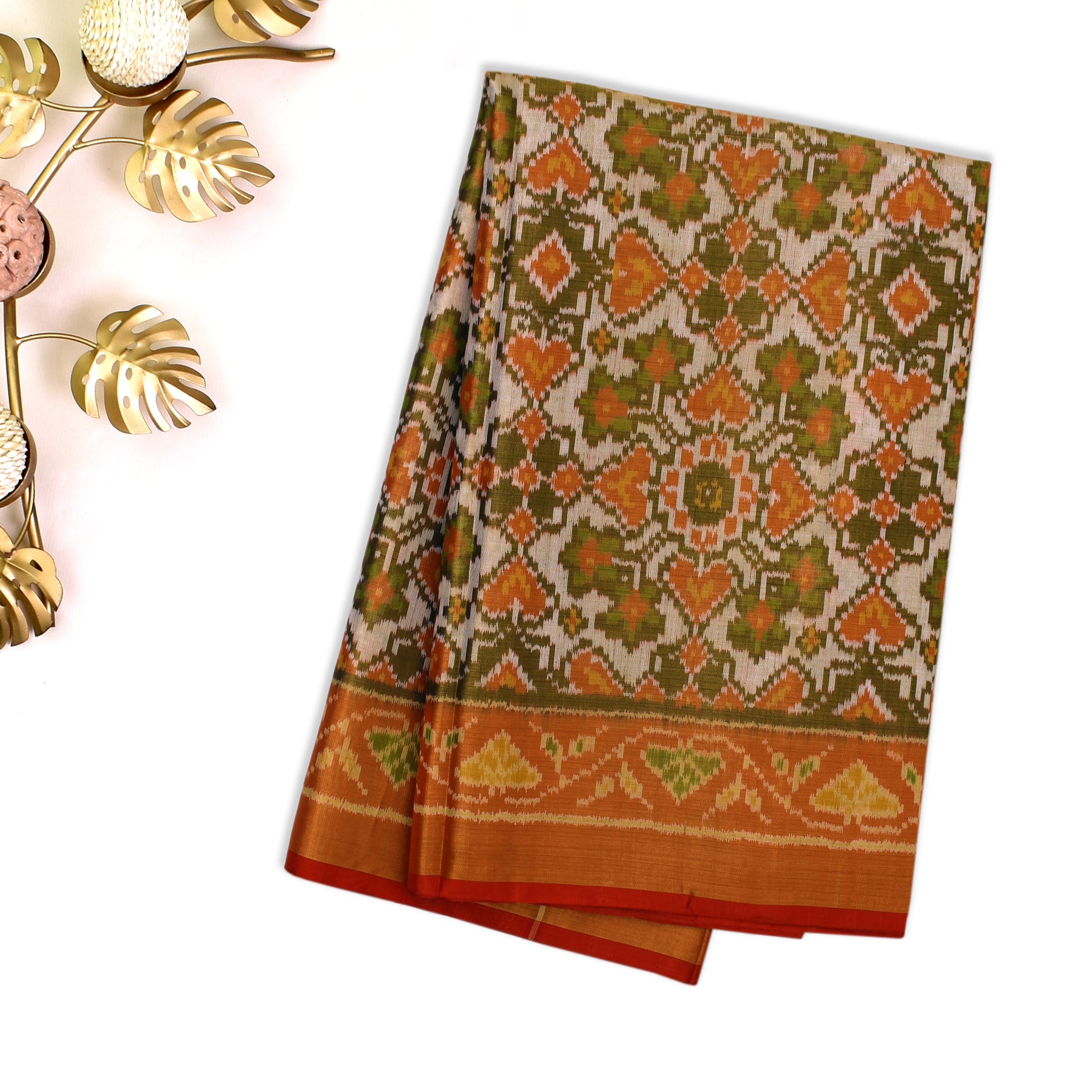
Conclusion
We hope that this blog showed you the work and effort that goes into the making of these sarees and why they should be treated like the works of art that they are. Head on over to view some of these gorgeous pieces in our Patola Saree Collection!
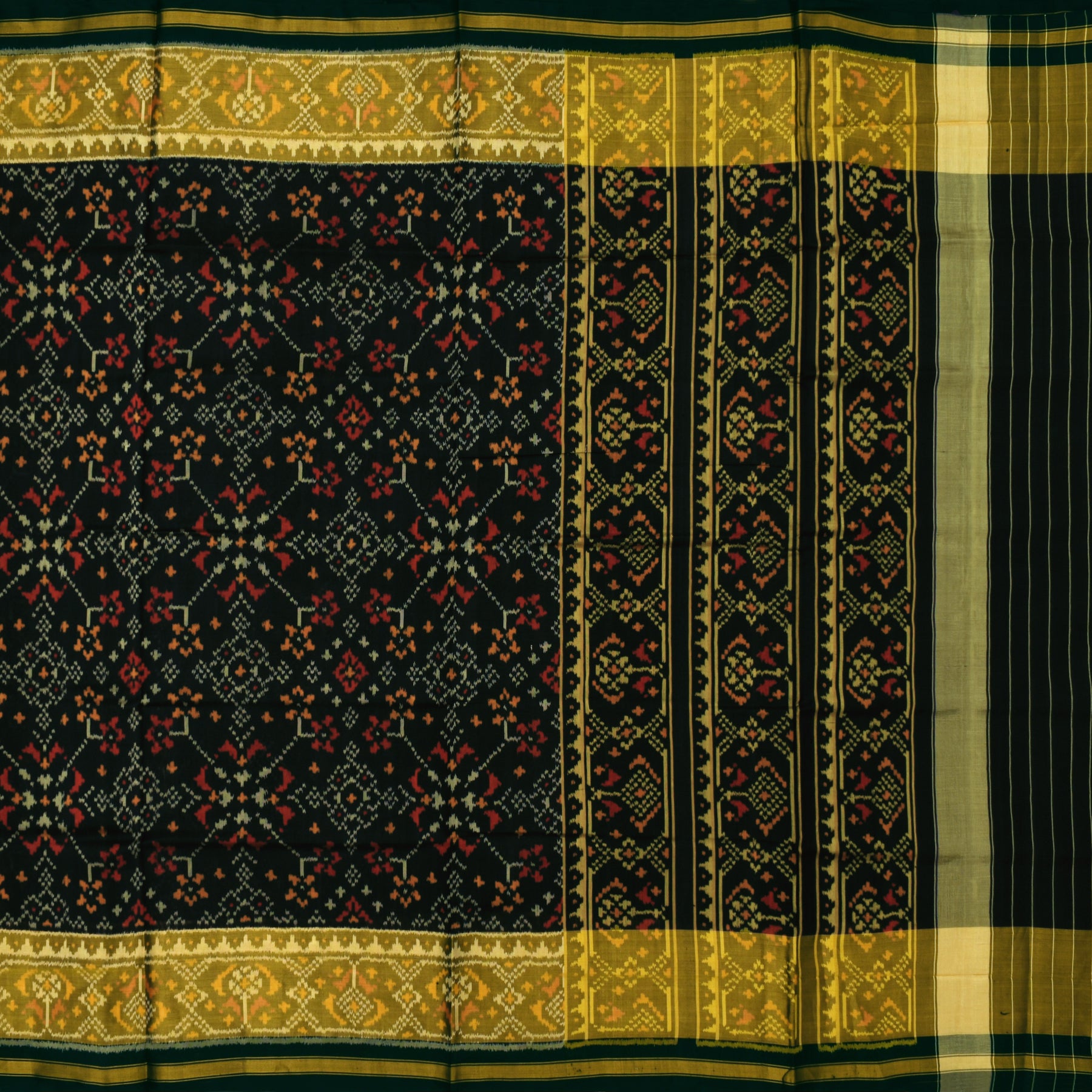
You can also take a look at the other beautiful silk saree collections we have like the Kancheepuram sarees and our Banarasi Silk Saree Collection! Shop today and fill your wardrobe with statement pieces!




